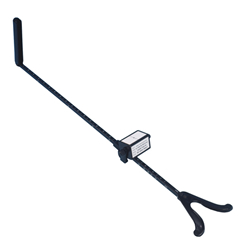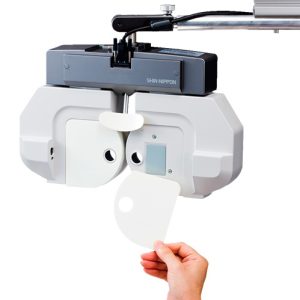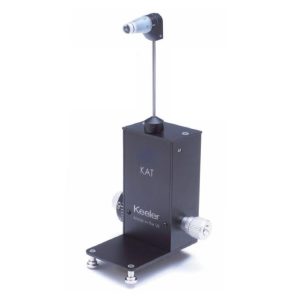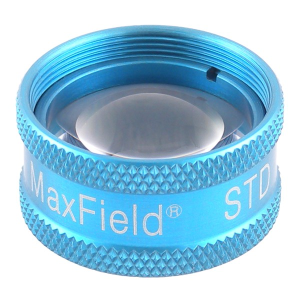Instructions for Use
Objective Convergence
To measure objective convergence, the RAF box attachment is placed at 36cm. The face-piece is placed gently on the patient’s infra-orbital margins by the examiner, who holds the ruler in their hand with two fingers obscuring the small dot from the patient’s view.
The patient is then asked to watch the black section as the rod is moved steadily towards his eyes. The measurement is taken at the point where the examiner notices that one or both eyes diverge on the loss of binocular fixation. This, being the examiner’s observation is called objective convergence. Normal readings are from 6cm to 10cm in a young adult.
Subjective Convergence
To measure subjective convergence the ruler is held behind the box at the 36cm end. The position of the box is adjusted so that the patient sees the black vertical line. They are then asked to watch the line as the box is moved steadily towards them and to report as soon as it moves however slightly, to the left or the right, or become double. The distance at which this happens is noted. It makes the subjective convergence. The line will be seen to move towards the side of the dominant eye. Should the line be seen double there is no definite dominant eye.
This is a far more delicate test than for objective convergence, as it possesses a greater accommodative element. It indicates the first moment at which full binocular vision is lost which cannot be observed by the examiner. Normal readings are less than 20cm, but are almost invariably greater than those of objective convergence.
The Accommodation Test
The positive range of accommodation should be measured both uniocularly and binocularly. For this test, rotate the box so that the text is visible to the patient. Starting at 36cm, move the box slowly toward the patient. The patient is asked to say when they first notice the letters becoming blurred. In a young adult normal reading are 10cm or less.
Caution:
In older patients allowance will have to be made for presbyopia.





